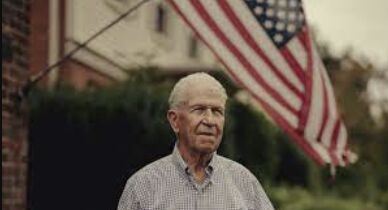Former Secret Service Agent Challenges Official Narrative of JFK Assassination in Explosive New Memoir
Former Secret Service agent Paul Landis, who was present during JFK's assassination, challenges the official version of events in his memoir, raising questions about a possible second shooter and sparking renewed interest in the case.
Paul Landis, a former Secret Service agent who was just feet away from President John F. Kennedy on the day of his assassination, is breaking his silence after 60 years to share his firsthand account of the tragic event. Landis' memoir, "The Final Witness," challenges the official version of the events that took place on November 22, 1963, and raises questions about the possibility of multiple gunmen in Dallas that day.
According to the Warren Commission, one of the bullets fired at the president's limousine struck both Kennedy and Texas Governor John Connally, who was riding with him. This theory, known as the "magic bullet theory," has been widely debated and criticized. However, Landis' recollection contradicts this narrative.
In his forthcoming memoir, Landis reveals that he found a copper-jacketed 6.5 mm projectile in the back of the seat behind where Kennedy was sitting in the presidential limousine. He explains that he had grabbed the bullet to prevent souvenir hunters from taking it, and then placed it next to Kennedy on the stretcher at the hospital.
Landis believes that the bullet struck Kennedy in the back, exiting before his body was removed from the limousine. Landis' account challenges the official statements he provided immediately after the shooting, and some aspects of his story cannot be reconciled with the existing record.
However, as a firsthand witness, his testimony cannot be dismissed outright. His recollection, if accurate, could reopen the question of a second shooter or other conspiracies surrounding the events of that fateful day. While Landis always believed Lee Harvey Oswald was the lone gunman, his newfound doubts have caused him to question the official narrative.
The publication of his memoir has the potential to change the understanding of what happened in Dealey Plaza and spark further research and investigation into the assassination of President John F. Kennedy.




